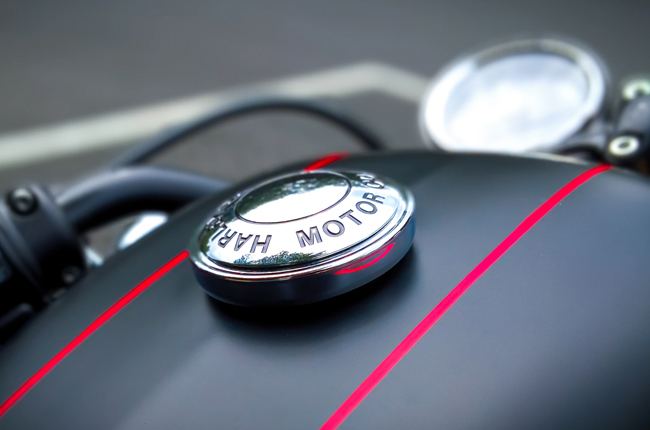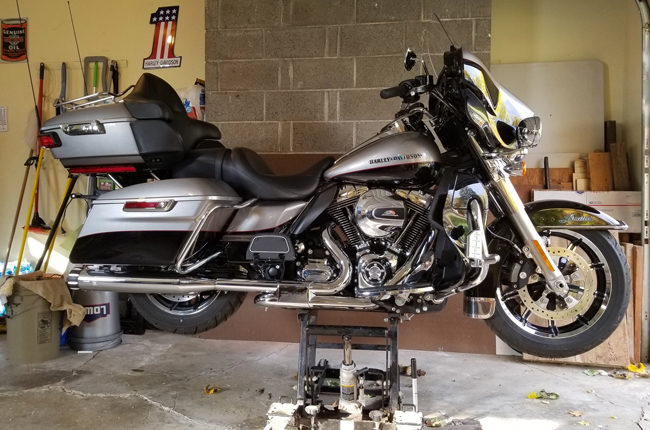How to prepare your motorcycle for long-term storage
Six tips for storing your motorcycle for weeks to months on end.

While we all do love riding our motorcycles, there are times that we encounter situations where we would have no choice but to park our steeds for an extended period of time. For instance, let’s say you’re going out of the country for a couple of months for studying a short course, or perhaps you have suffered from an injury that would otherwise prevent you from riding for an extended period of time. Whatever the reason may be, long-term storage of your bike isn’t just as simple as parking it in a dark spot and leaving it there thinking it would be alright after you come back for it after a couple of months or so. Certain steps must be taken into account to make sure your motorcycle remains in tip-top shape once you return to take it back out on the road.
Clean your bike

Before you park it for an extended period of time, give it a good wash. You would want to take off all the dirt and grime from the last few rides you’ve had with it, after all, who would want to swing a leg over a dirty motorcycle. Any excess mud, grime, or bird droppings that’s been sitting on the bike’s surfaces could damage the paint and eventually cause corrosion. After giving it a good clean, let it dry under the sun before finally parking it for long-term storage.
Gasoline tank

If your tank is about to go empty or, even half-filled, top it up and sure you have a full tank. A half-filled tank can cause certain maintenance problems with your bike. Ethanol-based gasoline can cause condensation inside a half-filled fuel tank which will eventually suck moisture out of air and form into some sort of gunk. This gunk is capable of clogging up your fuel system, whether your bike runs with a carb or an electronic fuel injection system.
Hence, for long-term storage, you actually have two choices — either fill the tank to the brim to leave no space for condensation to take place internally, or start the bike until you eventually use up all the fuel stored in the tank, and eventually dry it up. After leaving your bike for a long time, the first thing you’d want to do is to ride it, and nothing would be more anti-climactic than an empty tank right when you’re ready to finally take it out.
Oil Change

If it’s been a while since your motorcycle has had a proper oil change, then it would be a good time to have one before you store your bike for an extended period of time. Engine oil acts both as a lubricant, but it also helps the filtration system of the motorcycle.
As the oil eventually breaks down through use, its level of acidity increases which can cause excessive corrosion and etching on the soft metal components of the engine like the transmission gears and bearings. Carbon deposits from old dirty motor oil, when left for long periods of time, would eventually rise to the surface and stick to the components of the engine. Two possible scenarios may occur, the carbon build-up may interfere with the airflow of the through the engine’s intake port preventing the valve from sealing properly when it closes. On the other hand, these carbon deposits could also fall into the engine cylinders and eventually jam its piston rings. Thus, it is best to get a proper oil change and keep it at healthy levels before storing your motorcycle for an extended period.
Disconnect the battery

Disconnecting the battery would prevent it from any “parasitic discharge” to preserve it even longer. This would also prevent the acid from the battery from leaking which could also serve as a corrosive to its terminals. Despite disconnecting the battery, do not expect it to be in the same condition as the last time you left it. Expect that without usage, it would slowly lose its charge and would eventually need replacement.
Another option is to hook it up to a battery tender. A tender monitors the voltage of the battery and will automatically recharge it once it detects that it is losing power. This will just keep it topped off whenever inactive.
Elevate the tires

Taking the load off, not just from your tires, but also your suspension system is also important in the long-term storage of motorcycles. The lack of use of motorcycle tires from being left parked for long periods of time actually causes more wear and tear than actually using them. The best thing to do is to elevate the motorcycle so as to take off the load from the tires. Over long periods of time, tires would eventually lose air pressure, and leaving all that weight on the tires could cause a permanent flat spot on the rubber. May also cause internal damage which can be structural in nature.
Thus, invest in a really good service stand or cradle to take the load off on both your tires and your suspension. You can even make use of everyday items to try to repurpose into a service stand like a sawed-off barstool, milk crates, or hollow blocks to elevate the bike.
Cover it up

Last but not least, no matter where you’re storing your motorcycle, properly cover-up. A good motorcycle cover would protect your motorcycle’s paint and body from dust and moisture. This will serve as your first layer of protection not only from the elements but also from stray animals that could be roaming around the area. The last thing you’d want is to return to your motorcycle only to find out that your plush suede seat was used as a favorite scratching surface of a stray cat.
Keep in mind that mice and other small rodents could easily sneak into the other small openings of your motorcycle such as the exhaust and the air intake. It would be a good idea to plug up these small openings with either a plastic bag, some newspaper, or rubber plugs to prevent nesting.
Related Articles
-
5 things that could save your life during a motorcycle-related emergency / Featured Article
Find out how you can help prepare yourself for a variety of emergencies on the road.
-
How to properly wash your motorcycle jacket / Featured Article
If you’re one of those people who never wash their motorcycle jackets, now may be the time to change that. Here are a few tips on how to wash your motorcycle jacket.
-
How to replace brake pads on monoblock radial calipers / Featured Article
Here’s a step by step guide on how to replace the brake pads on your motorcycle equipped with monoblock calipers.
-
How to properly splice electrical wires / Featured Article
Here’s an easy step-by-step guide on how to properly splice wires when dealing with electrical components of your motorcycle.
-
How to know when it’s time to replace your motorcycle battery / Tips & Advice
Here are a few common signs that your motorcycle's battery is on its way out and due for replacement.
Latest Features
-
Last-minute Christmas gift ideas for your rider friends and family / Featured Article
Struggling to think of gift ideas for your motorcyclist friends and family? Read on to get some inspiration this gift-giving season.
-
Ride a naked sportbike? Get these 5 upgrades first / Featured Article
Here’s a quick list of 5 upgrades to your naked sportbike to enhance your riding experience.
-
Motorcycle 101: The inner workings of a slipper clutch / Featured Article
Slipper clutches are awesome as they make for more forgiving downshifts and a lighter clutch lever. Let’s take a closer look at them and see how they work.








